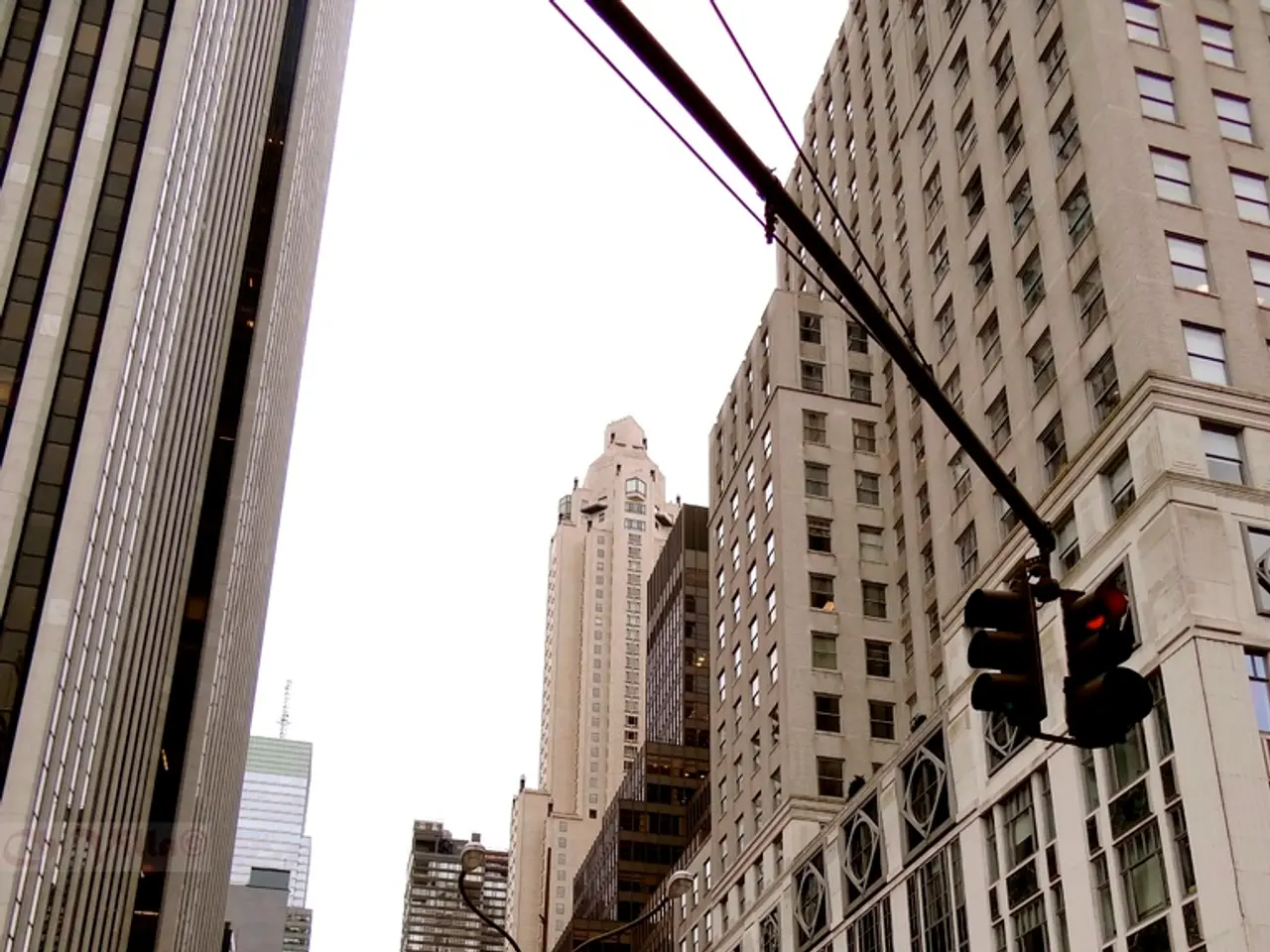Traffic chaos in Lucknow reoccurs during the rain, causing frustration for commuters
In the heart of India, Lucknow city experienced a challenging traffic situation during the festive season of Raksha Bandhan. The city's bustling streets, typically filled with vibrant energy, were marred by prolonged traffic jams, as heavy rains compounded the already strained traffic management systems.
Major bus terminals witnessed a surge in crowds, despite inclement weather, leading to congestion on roads and transit points. Commuters took to social media to voice their frustrations about the traffic situation, with the official X handle of Lucknow Police receiving numerous posts, images, and videos capturing long traffic snarls.
The police responded to dozens of complaints, issuing updates, advisories, and apologies, while also explaining ongoing constraints like potholes, waterlogging, and traffic signal failures. The downpour led to traffic snarls and chaos across major transit points, with Cantt Road reporting long tailbacks and traffic jams reported from various areas, including Cantt road and Hussainganj. A 2-km traffic jam occurred on the Lucknow-Kanpur highway, stretching from Sainik School to beyond Nadarganj.
Passengers arriving at the Charbagh railway station waited under crowded shelters as rainwater seeped through the roof. The key causes of these traffic disruptions were waterlogging due to poor drainage systems, traffic signal failures, increased traffic volume during the festive season, and unruly driving behaviour.
Key areas such as Hazratganj, Gomti Nagar, and Shaheed Path frequently experienced severe congestion caused by flooded roads and malfunctioning traffic management systems. Heavy rains quickly led to large pools of water on low-lying and poorly drained roads, making travel slow and difficult. Additionally, the failure of smart traffic signals forced police to manage traffic manually, further slowing movement.
These issues were exacerbated during festivals due to increased traffic volume. To ease congestion, the police resorted to manual traffic management, while the city administration deployed pumping stations and pumps at waterlogged spots to drain excess water more quickly. Advance preparation and deployment of additional teams in vulnerable areas were also employed to clear water and restore services during continuous rains.
Calls for improvements in urban drainage infrastructure and regular clearing of clogged drains were made to prevent water accumulation. Increased coordination between traffic police and municipal officials was also proposed to handle festival-related traffic surges more effectively.
In summary, the core issue is the city’s inadequate drainage system combined with critical traffic signal malfunctions in heavy rains, aggravated by festival traffic loads. Long-term solutions would require substantial infrastructure upgrades and improved urban planning to manage rainwater runoff and robust traffic control systems.
This synthesis is based on recent reports of traffic disruptions in Lucknow due to rain in August 2025. Commuters were stranded for approximately two hours due to the traffic jam.
Despite the festive season, crowded bus terminals and increased traffic volume led to prolonged congestion on roads, affecting the city's infrastructure and lifestyle. The chaotic traffic situation during the Raksha Bandhan festival highlighted the need for improved home-and-garden maintenance, such as fixing potholes and drainage systems, to prevent waterlogging on roads.
For sports enthusiasts, the city's cricket stadiums remained unaffected by the traffic snarls, offering a sanctuary for fans to enjoy live matches. In contrast, travel plans were disrupted due to the disorganized traffic management systems, making it difficult for visitors to explore the city's sightseeing and travel destinations.
Looking ahead, collaborative efforts between city administration, traffic police, and urban planners are essential to implement long-term solutions, like upgrading the city's infrastructure for efficient drainage and installing smart traffic signals to ensure seamless travel during festivals and monsoon seasons.




